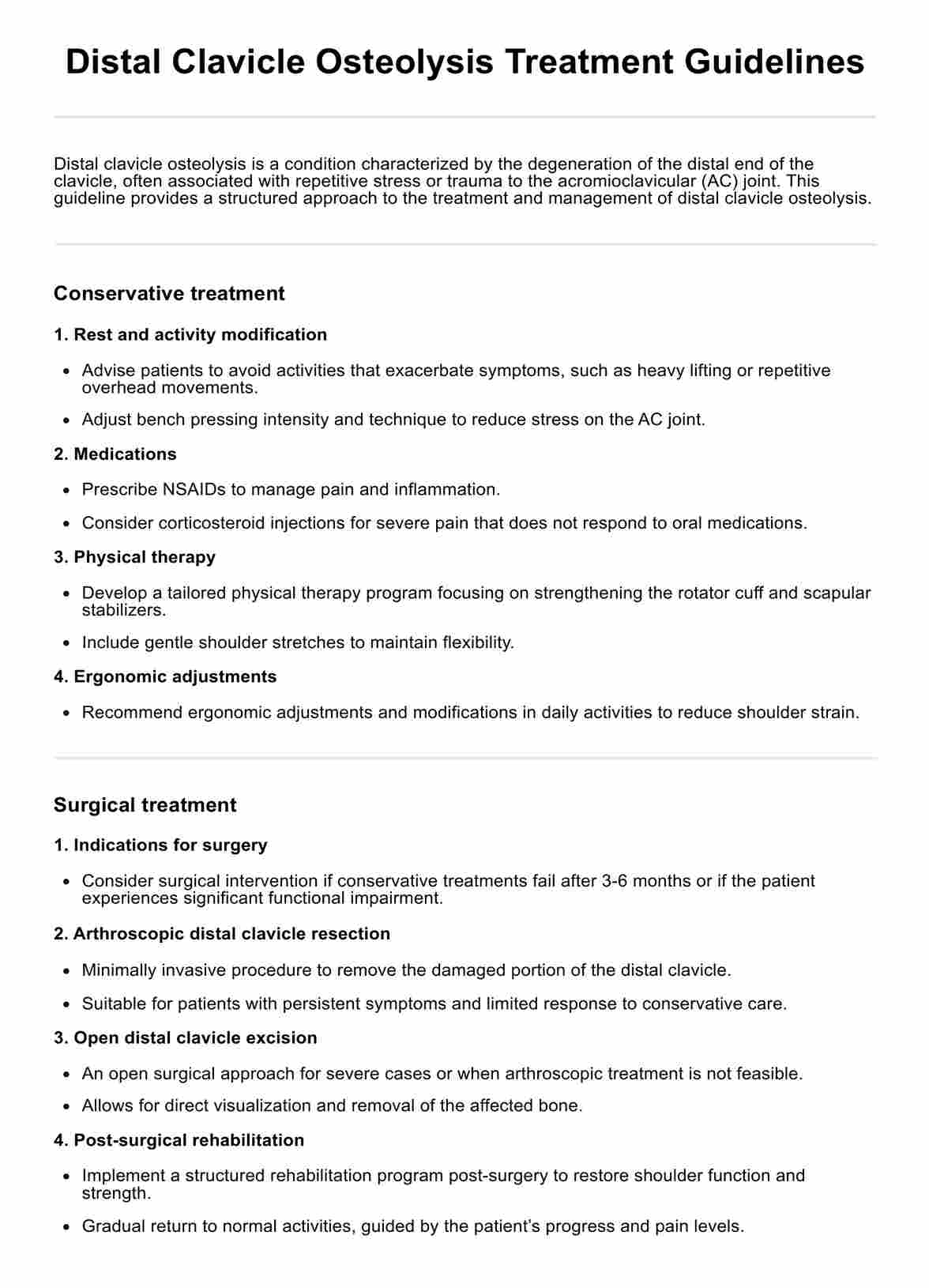Distal clavicle osteolysis typically does not heal on its own and requires intervention such as rest, activity modification, physical therapy, or, in severe cases, surgical treatment to alleviate symptoms and promote healing.

Distal Clavicle Osteolysis Treatment Guidelines
Learn about treatment guidelines for distal clavicle osteolysis, along with a practical example. Download Carepatron's free PDF for more information.
Use Template
Distal Clavicle Osteolysis Treatment Guidelines Template
Commonly asked questions
Treatment for distal clavicle osteolysis includes conservative measures like rest, ice, and physical therapy, and may extend to surgical options such as arthroscopic distal clavicle resection if conservative treatments fail.
The healing time for osteolysis varies, but with appropriate treatment, symptoms may improve within a few weeks to several months, depending on the severity and adherence to the treatment plan.
EHR and practice management software
Get started for free
*No credit card required
Free
$0/usd
Unlimited clients
Telehealth
1GB of storage
Client portal text
Automated billing and online payments











